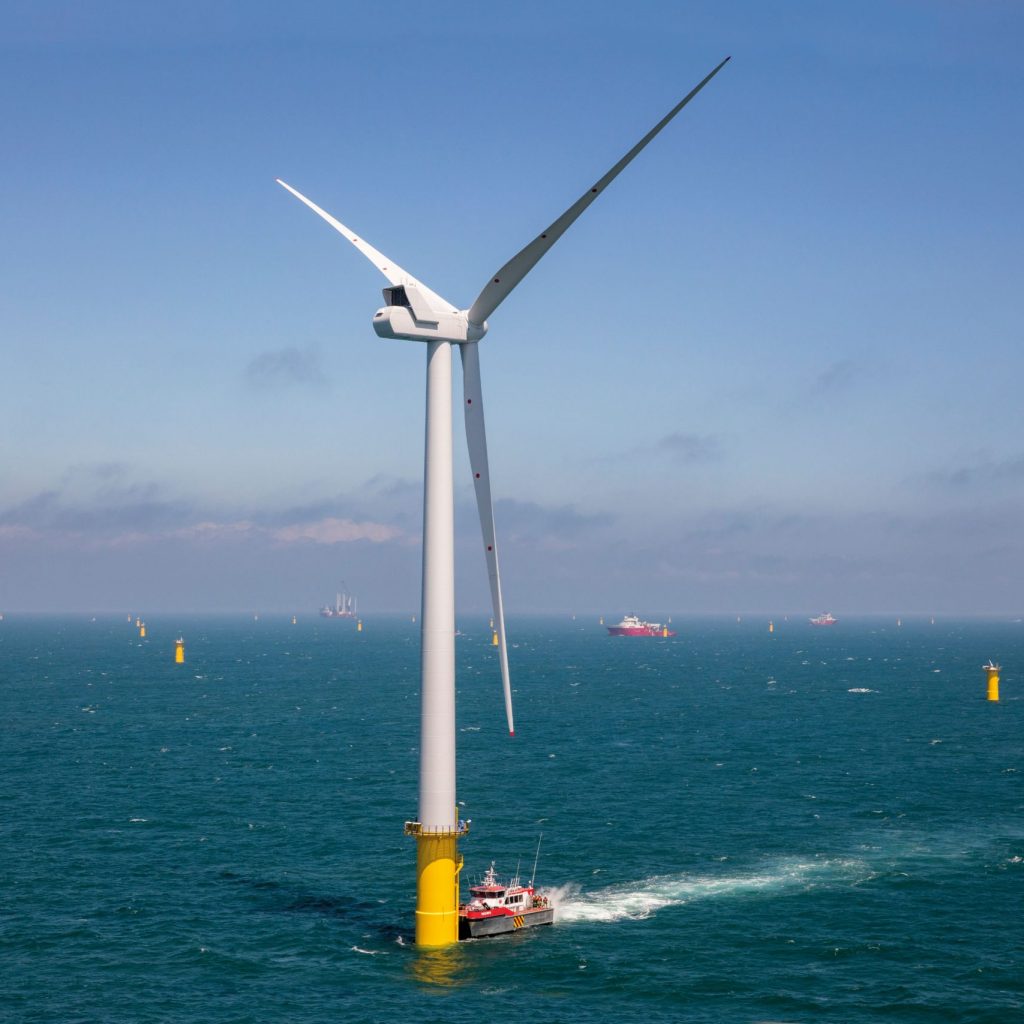

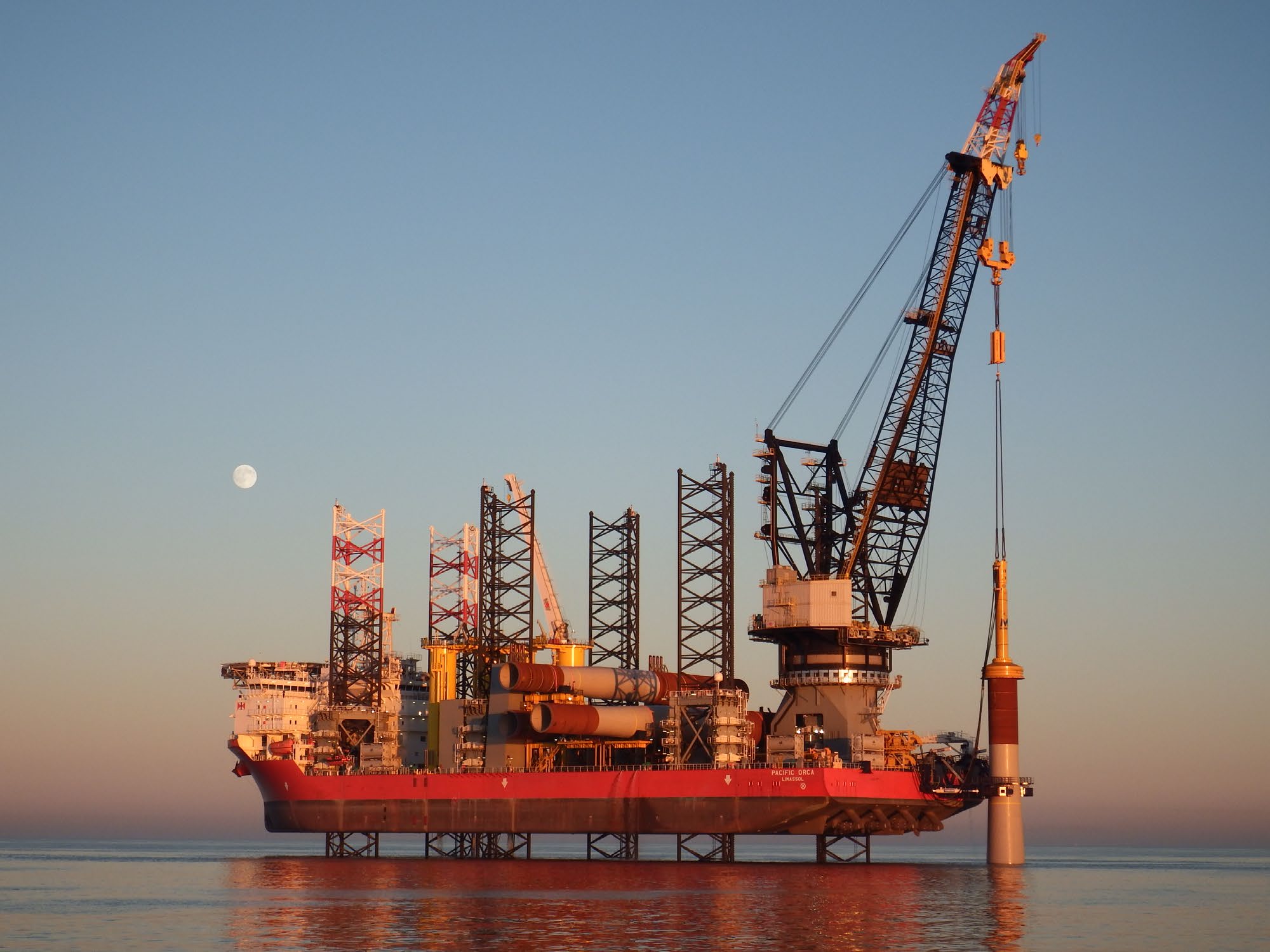
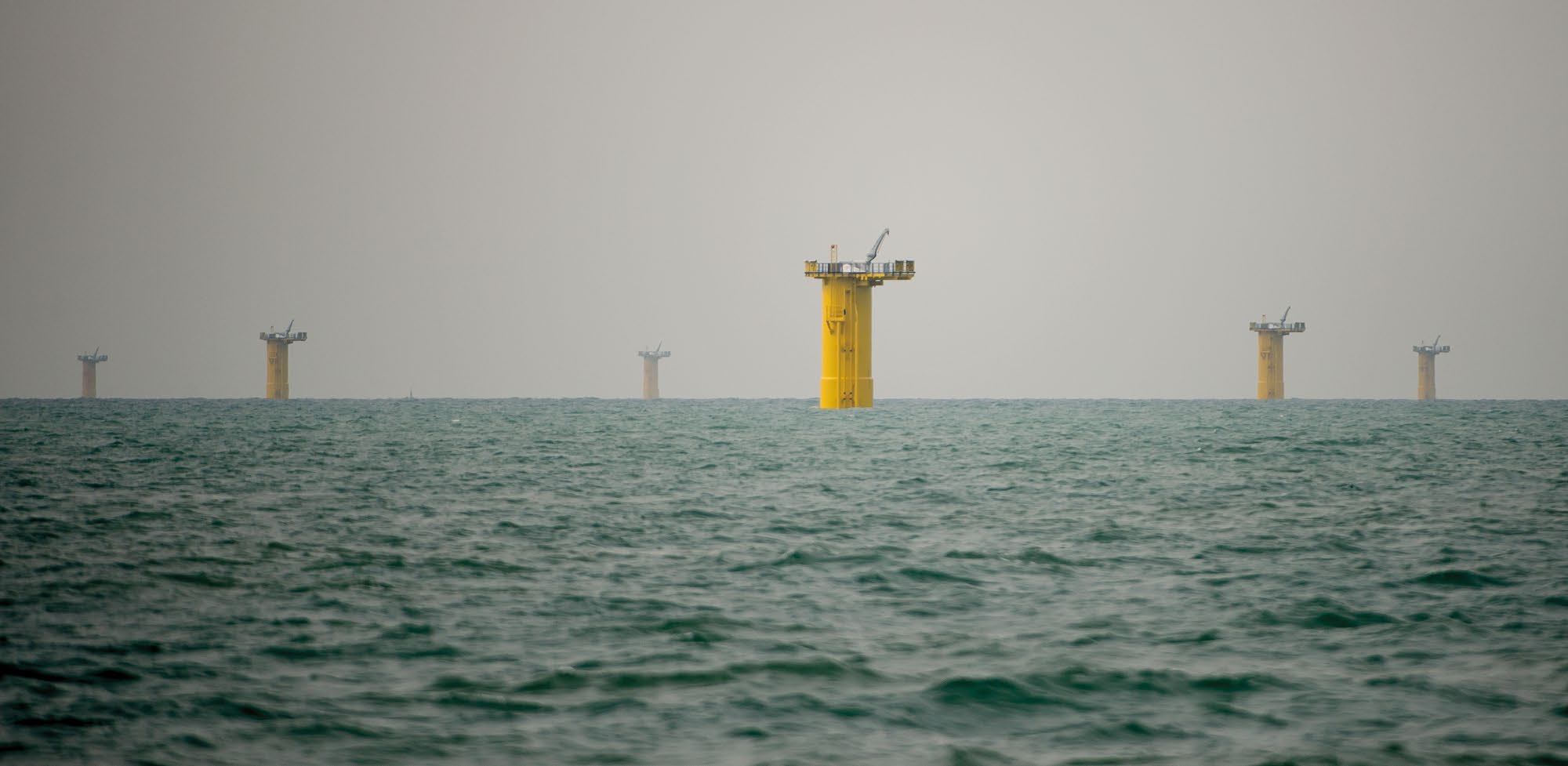
Foundations, each tailor-made to suit the water depth and seabed geology at each location, are installed using a jack-up vessel which has extendable legs to raise itself up to create a level and steady platform above the sea. Two types of foundation are being considered: monopiles, which are a long steel tube driven into the seabed, and ‘jackets’ which are a lattice structure attached to the seabed. In the case of monopiles, a hydraulic hammer starts with soft start piling, before ramping up to drive the monopiles at least 30m into the seabed, enough to stay in place for the lifetime of the wind farm.
For jacket type foundations the base of the structure is secured to the seabed using either pin piles, which are much smaller than monopile foundations, or suction buckets. Once a foundation has been installed, a yellow transition piece is placed on top and bolted into position. Once operational, the turbine technicians will transfer from a crew transfer vessel to the transition pieces, ascending a ladder to access the bottom of the turbine tower.
The 116 Rampion foundations were installed in nine months, using two jack-up vessels. Installation takes place at all times of day and night to take advantage of weather windows, because once the piling operation commences, it must continue to completion to protect the safety of the vessel and crew.
Where metocean surveys have detected risk of scour – erosion of soft seabed material around turbine foundations, rocks are placed around the base of the foundations to act as scour protection and prevent erosion.
A key sensitivity near the development proposals is the Marine Conservation Zone (MCZ) which is notable for its Black Bream fish population. In order to address concerns over disturbance to its spawning season, piling was avoided on the original Rampion project between mid April and the end of June.
A ‘soft-start’ piling methodology is used in foundation installation whereby the hammer energy and therefore noise levels, are gradually ramped up to avoid startling any fish and marine mammals in the area. Piling foundations into the seabed is a complex technical process, sensitive to weather, wind speed and wave height, therefore suitable conditions are taken advantage of when they arise. There may be some less common combinations of atmospheric conditions where the piling can be audible from shore. Experience from the original Rampion project led to protocols for assessing this ahead of any
night campaigns, in order to avoid the risk of night time disturbance.
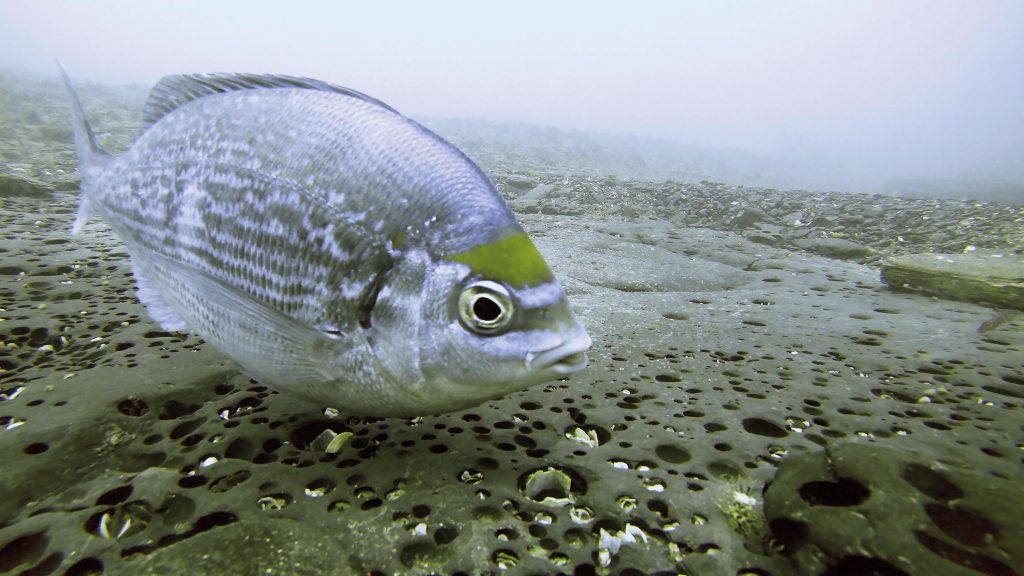
Jack-up vessels are used again in the turbine installation process. They are able to transport up to eight turbines to site in one trip. The vessel legs are lowered onto the seabed and the vessel is jacked up out of the water, to create the stable, level platform for massive cranes to install the turbine components.
First, the tower is erected, then the ‘nacelle’ housing the gearbox and generator is lifted and attached to the top of the tower.
Finally, the three blades are installed one by one and connected using bolts. The vessel is then lowered down into the sea before moving on tothe next turbine location. Each turbine takes around 24 hours to install.
Rampion’s original 116 turbines were installed in six months, with commissioning works continuing after installation, before power is generated and transmitted to the grid.
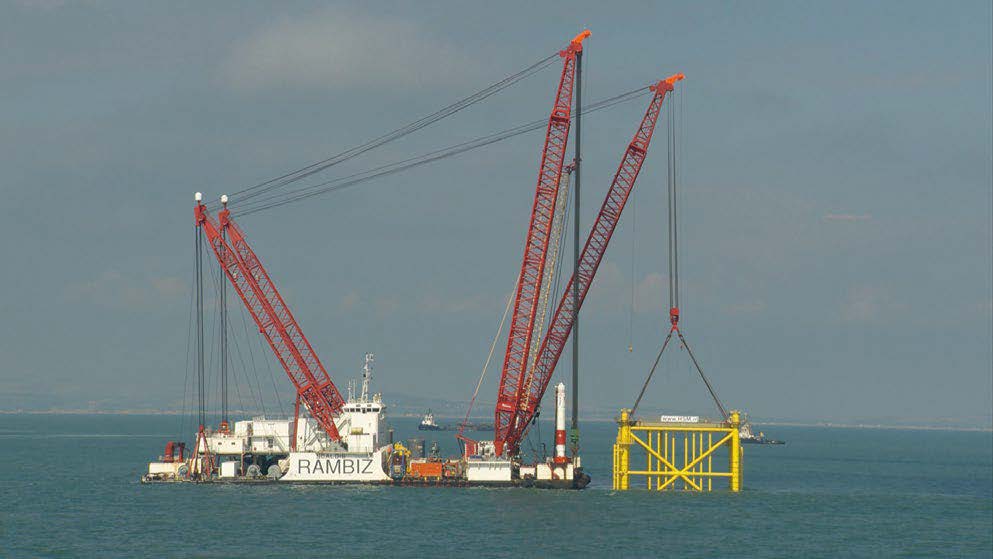
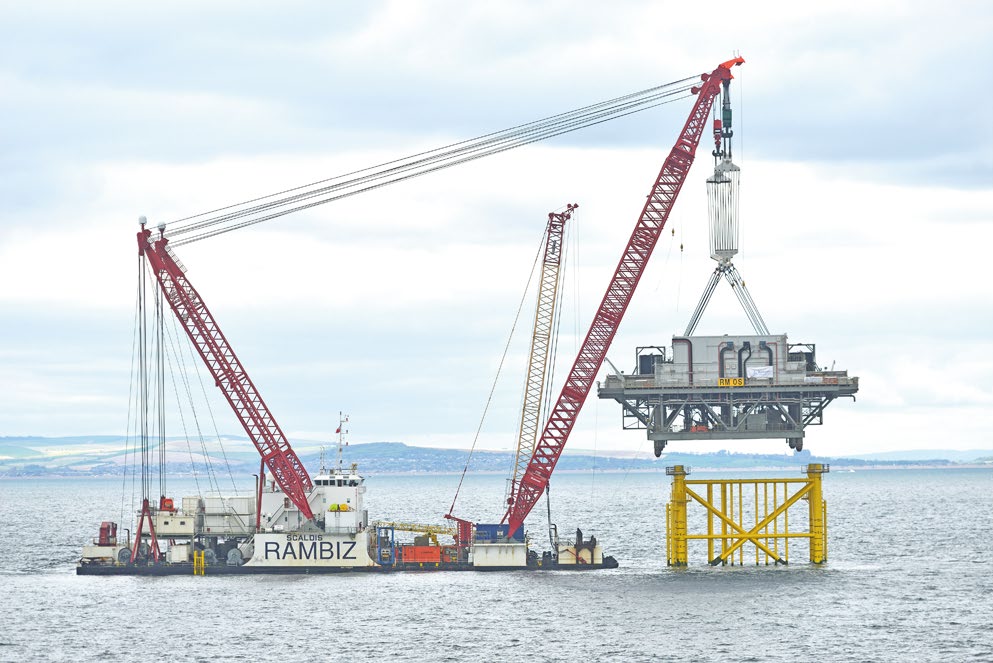
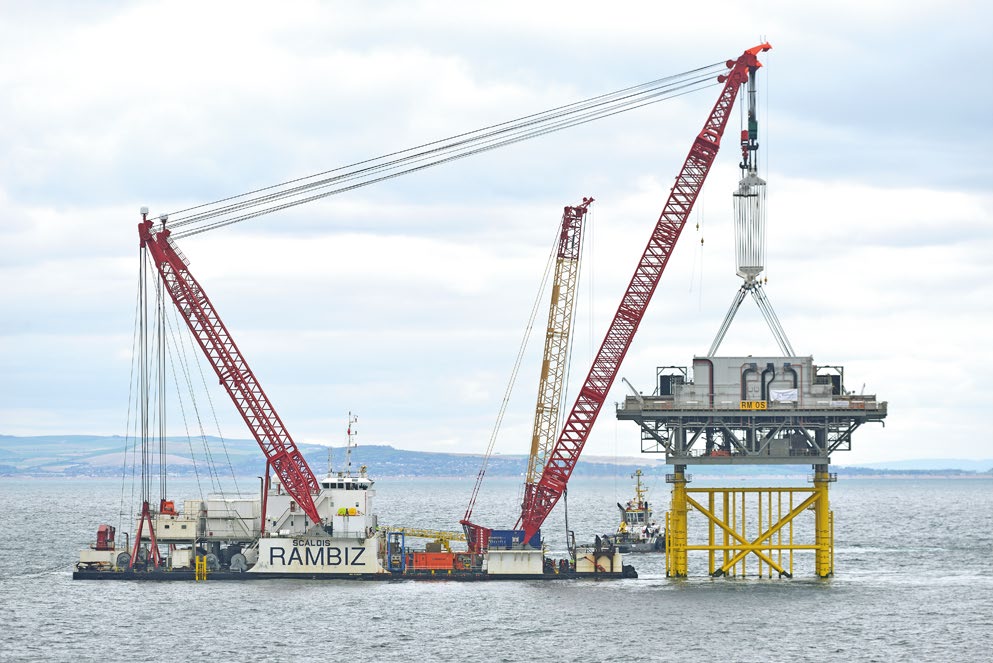



Installation of offshore substation platform
The offshore substation arrives to site in two major components. A jacket foundation – a lattice steel formation with four legs – is designed to support the offshore substation topside and cable deck. The foundation is fixed in place using pin piles to connect the legs to the seabed. Once the substation is in place, commissioning continues with a crew of expert engineers to complete the fit out.
In total, the original Rampion offshore substation weighs nearly 3,000 tonnes. The offshore substation is the single most complex and expensive piece of equipment on the project. It houses electrical components at the heart of the wind farm including transformers, switchgear and control systems.
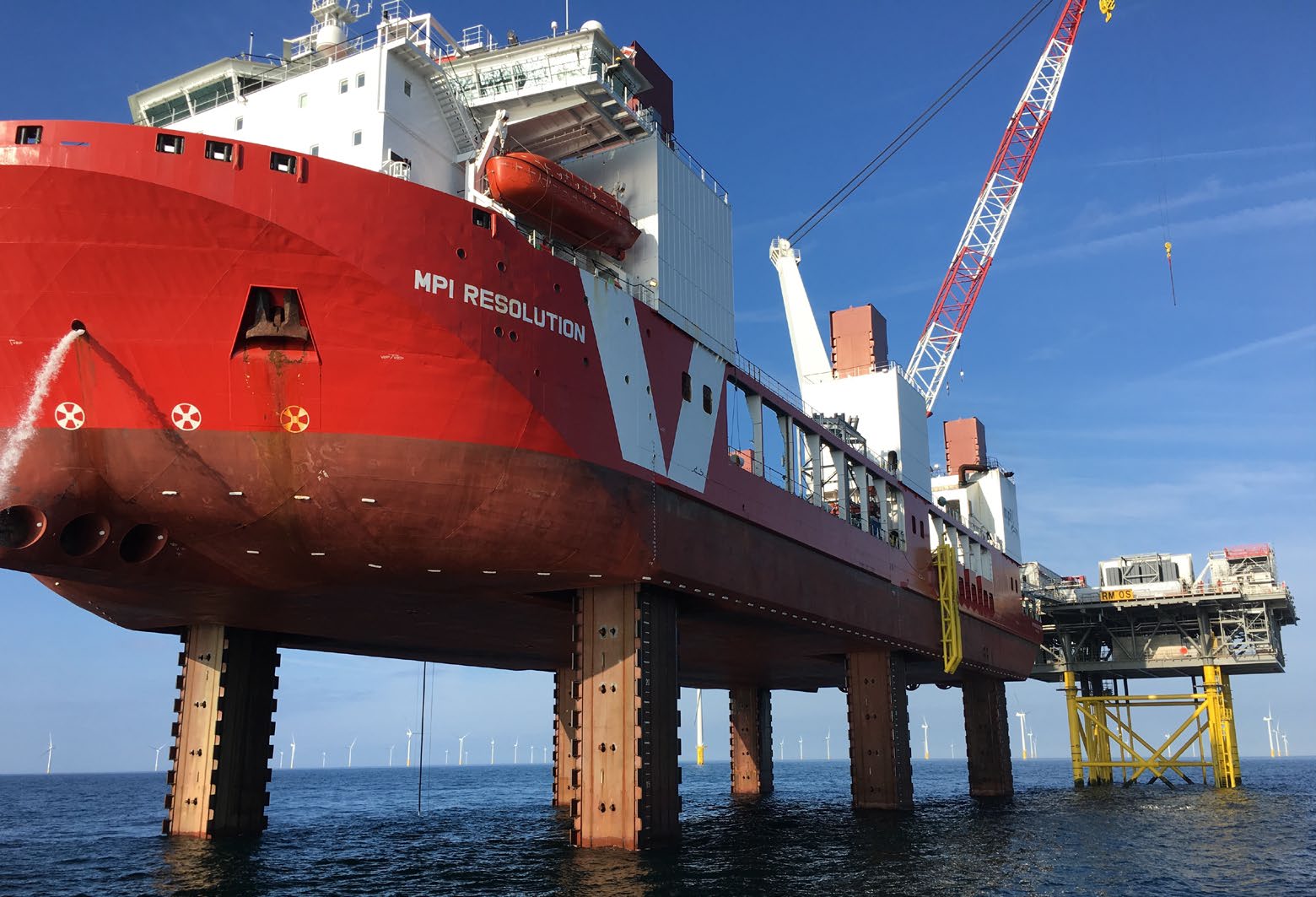
Inter-array cables transport power from the turbines to the offshore substation. For the original Rampion scheme, the cable conductors are made of copper, protected by a single layer of 5mm steel wire armoured plating, and the cables carry the power at 33kV.
The electricity is transmitted from the offshore substation to shore, along export cable circuits. The installation is carried out with a cable-laying vessel, which uses a carousel to carry the cable. Only a handful of vessels across the whole world are capable of doing the job. The carousel slowly turns to release cable from the vessel onto the surface of the seabed.
A separate parent vessel then launches a range of remote operating vehicles (ROVs), which are sent down onto the seabed. The ROV is operated and monitored from a sophisticated control centre on board the parent vessel. The ROV can cut, plough or jet a trench for the cable to be laid into. Trenching is used for harder seabed ground conditions while jetting is used for softer ground. Dual grabs are used to hold the cable before a rear depressor pushes the cable to the bottom of the trench to a minimum depth of 0.5 metres (m) and a target depth of 1m. The trench is partly backfilled by the ROV before the natural tidal movements complete the burial.
If the minimum depth of 0.5m cannot be reached, rocks bunds are placed on top of the cable to protect it from vessel anchors.
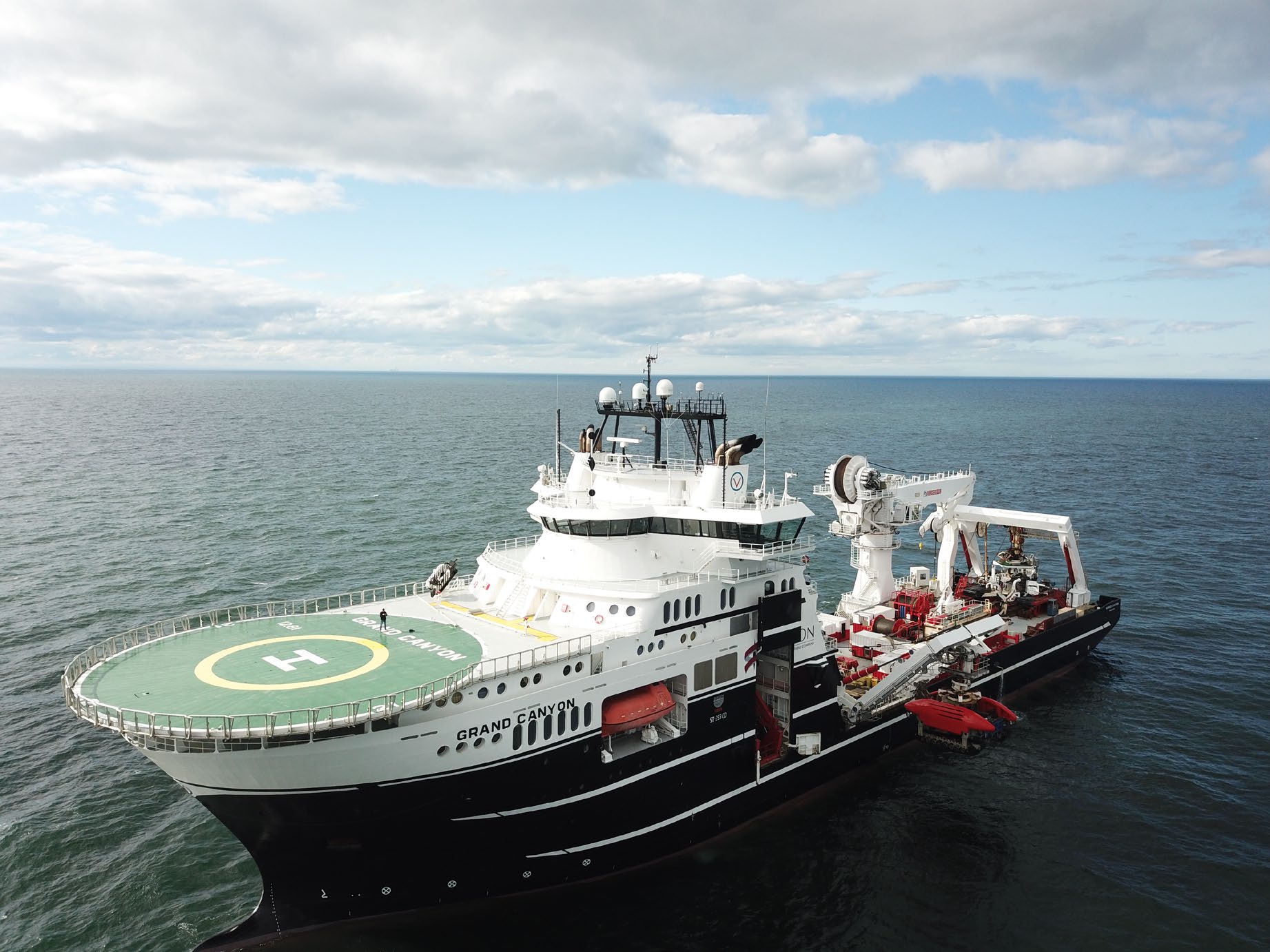
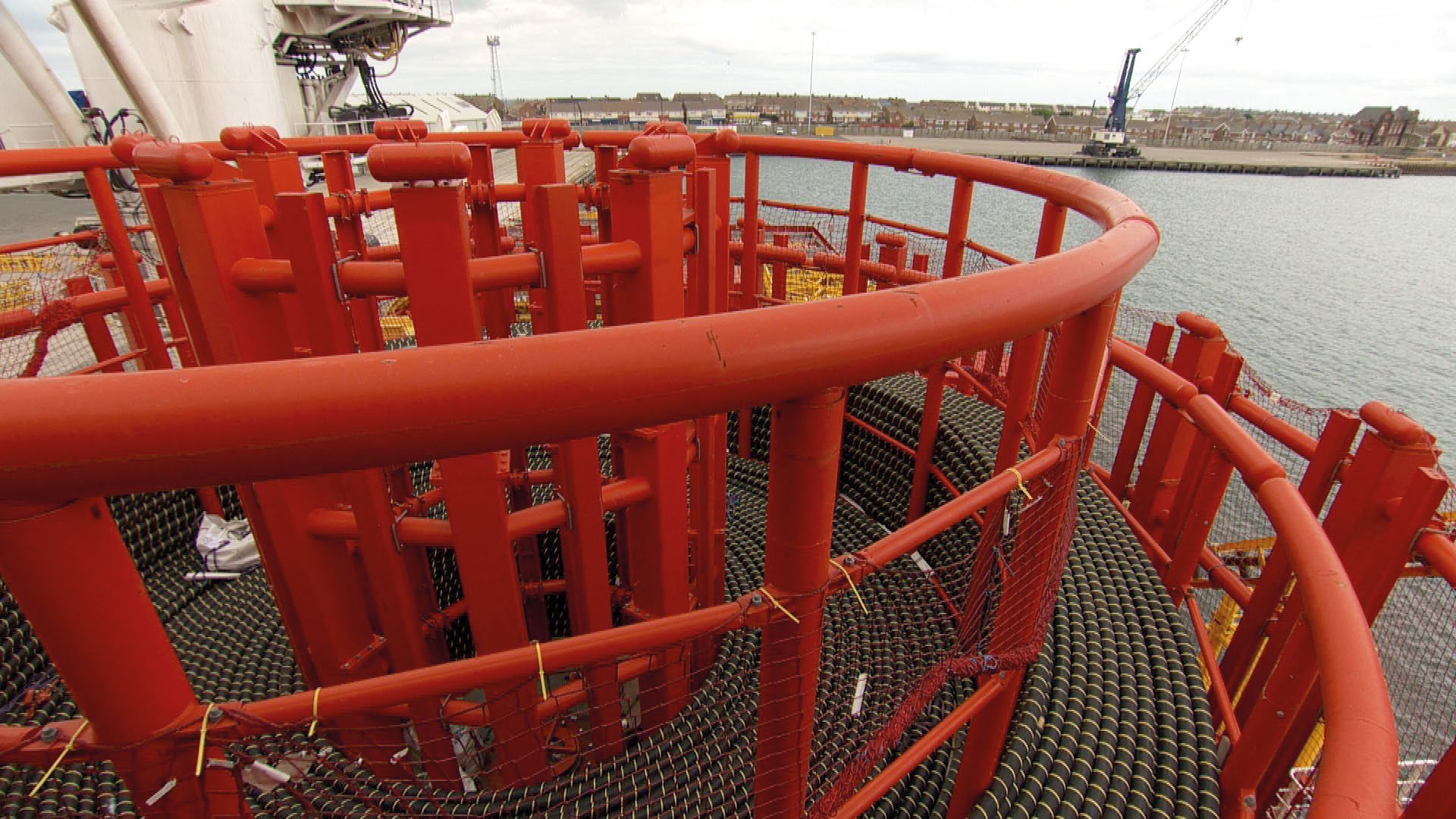
During construction, safety is paramount for all those who use the marine environment. The sound that the piling operation produces will be heard underwater and can be significant. The closer divers are to the piling operation, the more intense the sound will be. The risks will be assessed and measures put in place for their safety, to reduce the potential impact on divers to as low as reasonably practicable.
For the original Rampion construction, the following measures were put in place:
Safety Zones during construction – A statutory 500m exclusion area for vessels was put around major construction vessels.
Soft-start monopile installation – Under the soft-start procedure, the piling started slowly at a hammer energy of 10% to avoid startling divers, was monitored closely and then gradually increased to full power over 30 minutes.
Diving Liaison Officer (DLO) – A DLO, also an experienced diver, was appointed to provide a first point of contact for the diving community.
Weekly Notice of Operations (WNOs) – All construction activities were notified to interested parties via WNOs, made available on the project website and distributed widely to marine users, sea user clubs and associations, ports and marinas, fishers and charter vessel owners.
Divers and Sea Users Fact Sheet – A Fact Sheet outlining the project construction, potential risks and contact information, was issued to the same sea user organisations.
Notifications – Divers both locally and nationally were informed of the construction work and risks, through the diving media, and local signs and information at ports and marinas.
Divers and Sea Users Event – A dedicated event was held to provide information and allow the diving and sea user community to discuss any concerns they had.
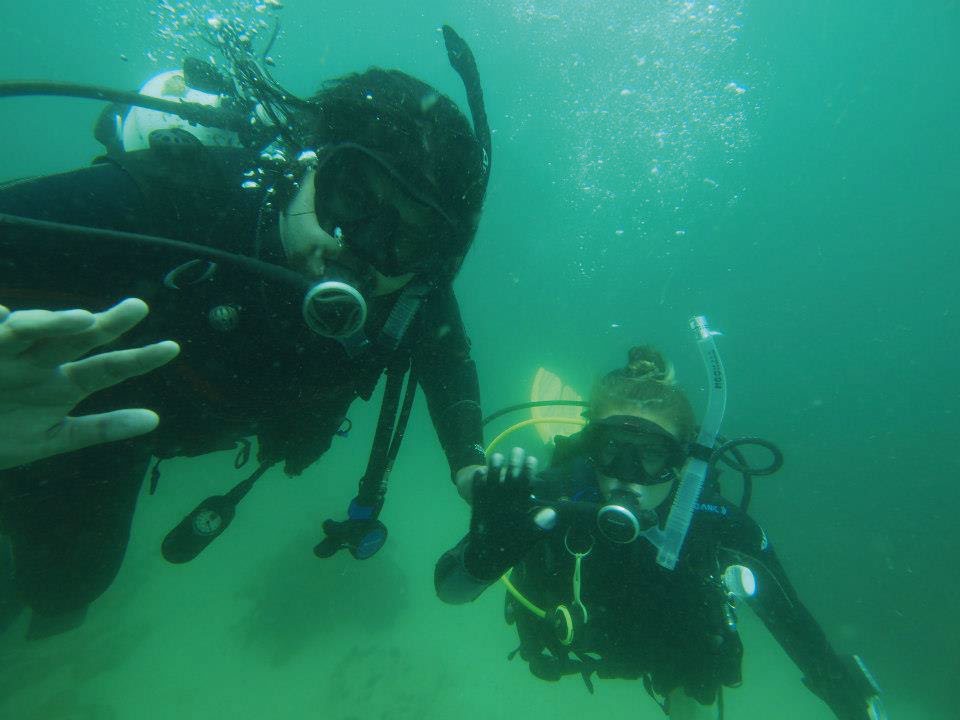
Cooperation with fishers
Cooperation with fishers commences in the early development of the project and continues through construction to completion and operation, to ensure the wind farm and commercial fishers can successfully coexist.
A Commercial Fisheries Liaison Officer has already been appointed and meetings held with four groups of fishers, who are based in various geographical locations along the
Sussex Bay.
A Coexistence Plan will be produced as part of the development consent process and subject to consent, Deemed Marine Licences will contain a number of conditions that must be discharged through the Marine Management Organisation, prior to the commencement of offshore construction works. One such requirement is the approval of a Fisheries Liaison Plan (FLP), which includes details on fisheries liaison, engagement, safety issues, mitigation strategies and high level information regarding cooperation agreements.
The broad objectives of the FLP are to:
© 2024 Rampion 2 Wind Farm. All rights reserved.
Created with ❤ by Growth by Design